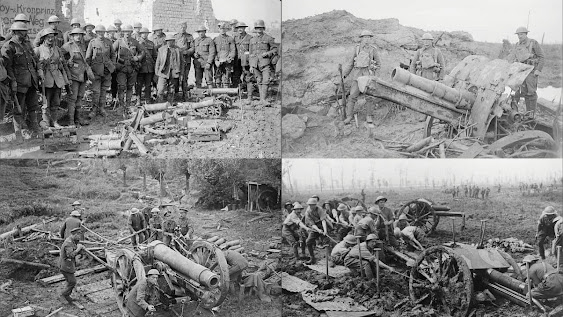Trenches and Tragedy: World War I Chronicles (September 30, 1914, to October 30, 1914)
In the heart of autumn 1914, the world remained ensnared in the throes of the First World War. As the days grew shorter and the chill of winter approached, the conflict continued to unfold with relentless ferocity. From the trenches of the Western Front to the sprawling battlefields of Eastern Europe, the period from September 30 to October 30, 1914, bore witness to a harrowing chapter in the annals of history. Join me as we delve into the tumultuous events that defined this crucial phase of the war.
Stalemate and Siege: The Western Front
On the Western Front, the once-fluid battle lines had solidified into a vast network of trenches stretching from the North Sea to the Swiss border. Here, amidst the mud and misery, soldiers from opposing armies faced off in a deadly game of attrition. Throughout September and October, sporadic skirmishes and artillery barrages punctuated the monotony of trench warfare, as both sides sought to gain the upper hand. Yet, despite occasional gains and losses, the deadlock persisted, foreshadowing the long and bitter struggle that lay ahead.
Eastern Front: Clash of Empires
Meanwhile, in Eastern Europe, the conflict raged with equal intensity as the armies of Germany, Austria-Hungary, and Russia clashed in a titanic struggle for supremacy. From the plains of Poland to the forests of Galicia, the Eastern Front witnessed a series of bloody engagements as millions of soldiers fought and died in the service of their respective empires. Despite initial successes, the Central Powers found themselves bogged down by the sheer size and resilience of the Russian army, foreshadowing the challenges that would plague them in the years to come.
Naval Warfare: Battle of the River Plate
Away from the muddy quagmire of the trenches, the seas played host to a different kind of conflict as the naval powers vied for control of vital shipping lanes and strategic ports. On December 8, 1914, the Battle of the River Plate unfolded off the coast of South America, pitting British naval forces against the German pocket battleship Admiral Graf Spee. In a daring engagement, the British ships succeeded in crippling the Graf Spee, dealing a significant blow to German naval power and bolstering Allied morale in the process.
A Glimpse into the Abyss
As we reflect on the events of September 30 to October 30, 1914, it becomes clear that the First World War was far from a brief and decisive conflict. Instead, it was a protracted struggle marked by unimaginable suffering and sacrifice on a global scale. From the trenches of the Western Front to the vast expanses of Eastern Europe, the war exacted a heavy toll on all who were caught in its grip, leaving behind a legacy of devastation and despair.
1. First Battle of Ypres (October 19 – November 22, 1914)
Although the majority of this battle took place after October 30, its early stages overlapped with the end of the specified timeframe. Fought on the Western Front around the Belgian city of Ypres, this battle was one of the first major battles where trench warfare became dominant. British, French, and Belgian forces, along with German forces, clashed in a series of intense engagements that resulted in heavy casualties on both sides.
2. Battle of Tanga (November 2-5, 1914)
This battle occurred in German East Africa (present-day Tanzania) between German and British imperial forces. It was one of the early clashes in the East African Campaign of World War I. The British, attempting to capture the port town of Tanga, encountered unexpectedly fierce resistance from the German defenders led by Colonel Paul von Lettow-Vorbeck. The battle ended in a decisive victory for the Germans and became known for its chaotic and costly nature.
3. Battle of the Vistula River (October 9-31, 1914)
This battle was part of the Eastern Front campaign between German and Russian forces. The battle saw the German Eighth Army, under General Maximilian von Prittwitz, engaging Russian forces along the Vistula River in present-day Poland. The battle resulted in a German victory, pushing the Russian armies back and solidifying German control over much of western Poland.
Yet, amidst the darkness of war, there were moments of courage, camaraderie, and resilience that served as beacons of hope in a world consumed by conflict. As we pay tribute to the countless individuals who endured the horrors of World War I, let us also remember their enduring legacy and strive to build a future free from the scourge of war.



0 Comments